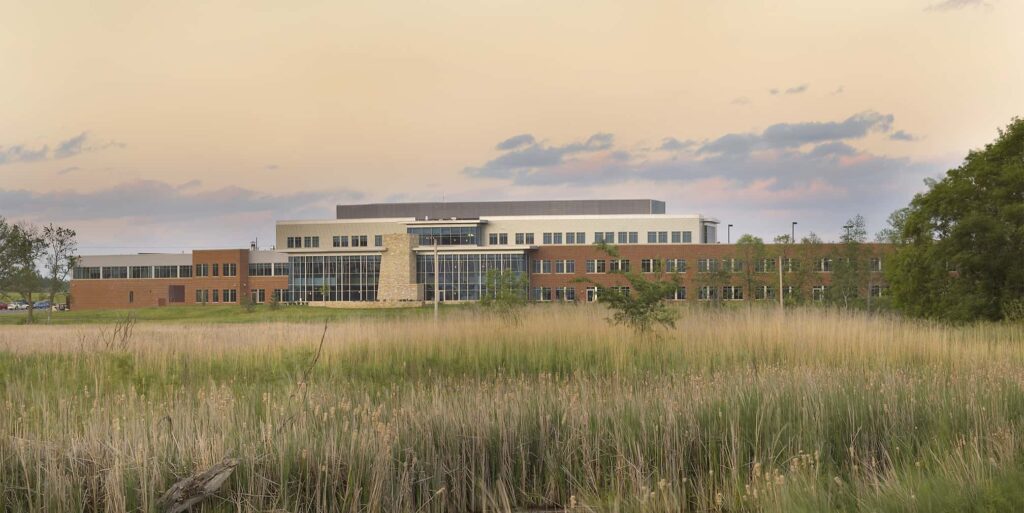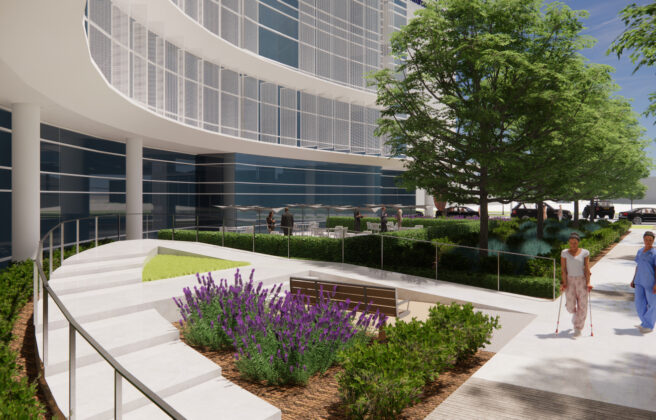“When community hospitals stand through multiple generations, how do people put a price to its construction and design, and what role do we as designers, engineers, and builders have in advocating for more long-term thinking?”
How do you define the cost of a building?
What if that building is designed to last 50 years? 100 years? Maybe even 200 years? How does that change the definition?
Architecture has long been considered a balance between firmness, commodity, and delight, all elements that have a direct impact on cost. While building construction costs can be significant, the price for ownership is far greater – particularly when you look at a life span that goes beyond most careers and through multiple generations. While our natural tendencies typically focus on the immediate expenditures, thinking long-range requires a different mindset.
The problem: Most of us can’t predict the future. While we can evaluate trends and look for patterns, such as rising energy costs or demographic shifts, today’s rapid rate of technological change and fleeting attention spans of consumers challenge us to know where we can be in the future, not simply want to be.
In such a world, how do we think more innovatively, plan for a building’s future, and assign a value to such existence?
A presentation we saw at a recent conference addressed such a challenge. The Long Now Foundation strives to provide an antithesis to today’s ever-accelerating culture and change how we look at time. Eschewing the trappings of short-term goals, the foundation is building a clock – one to last and measure 10,000 years. It’s been a meticulous and carefully planned effort: what materials to use, where to locate the clock, how to design for maintenance, how to design so that those who know nothing about the design can understand it. The design even acknowledges inevitable decay, but in a way that could potentially add value or strength.
Iconic structures from across cultures and throughout history have influenced this project. The Pantheon in Rome, built in 126 AD, has stood the test of time, displaying construction of phenomenal resistance, technology and systemization used by the Roman Empire. The Sistine Chapel, the Familia Sagrada, the Pyramids of Giza, Angkor Wat, Taj Mahal – all structures that have inspired architects for generations, surviving the ravages of nature and man through their beauty and strength and context, providing a bridge between who we are, who we were, and who we could be.
During America’s formative years, structures were built from basic cabins and shelters to elegant icons like the Capitol and Thomas Jefferson’s Monticello. Somewhere along the lines, that balancing act of firmness, commodity, and delight became unstable.
While the buildings we design today are not typically intended to last 200 years, many are intended to be owned and maintained by a single institution for at least 50 years. We often talk about material selections, construction assemblies, and maintenance requirements in the long term (firmness), but what about questions of adaptability, energy consumption, and long-term impact on the efficiency of the occupants (commodity)? What about the aesthetics (delight) of a building intended to last for decades? How do you design a building so that it will need not to be renovated in 15 years simply because it looks dated?
Over the course of the next several months through our Idea Cloud we will explore long-range thinking and ask what it means to design a building to last 50, 100, or even 200 years. We will look at the question from several angles as described above beginning with energy consumption, including in two of the most energy intensive building types in the U.S., health care and laboratory/high-tech buildings.
At the same conference, a construction executive asked the representatives of architecture, engineering, and construction firms how they get their clients to think long-term. To answer that question with confidence, we have to ask it of ourselves. It’s more than an academic exercise; it really is one of necessity – for our buildings, our communities, and our environment.








